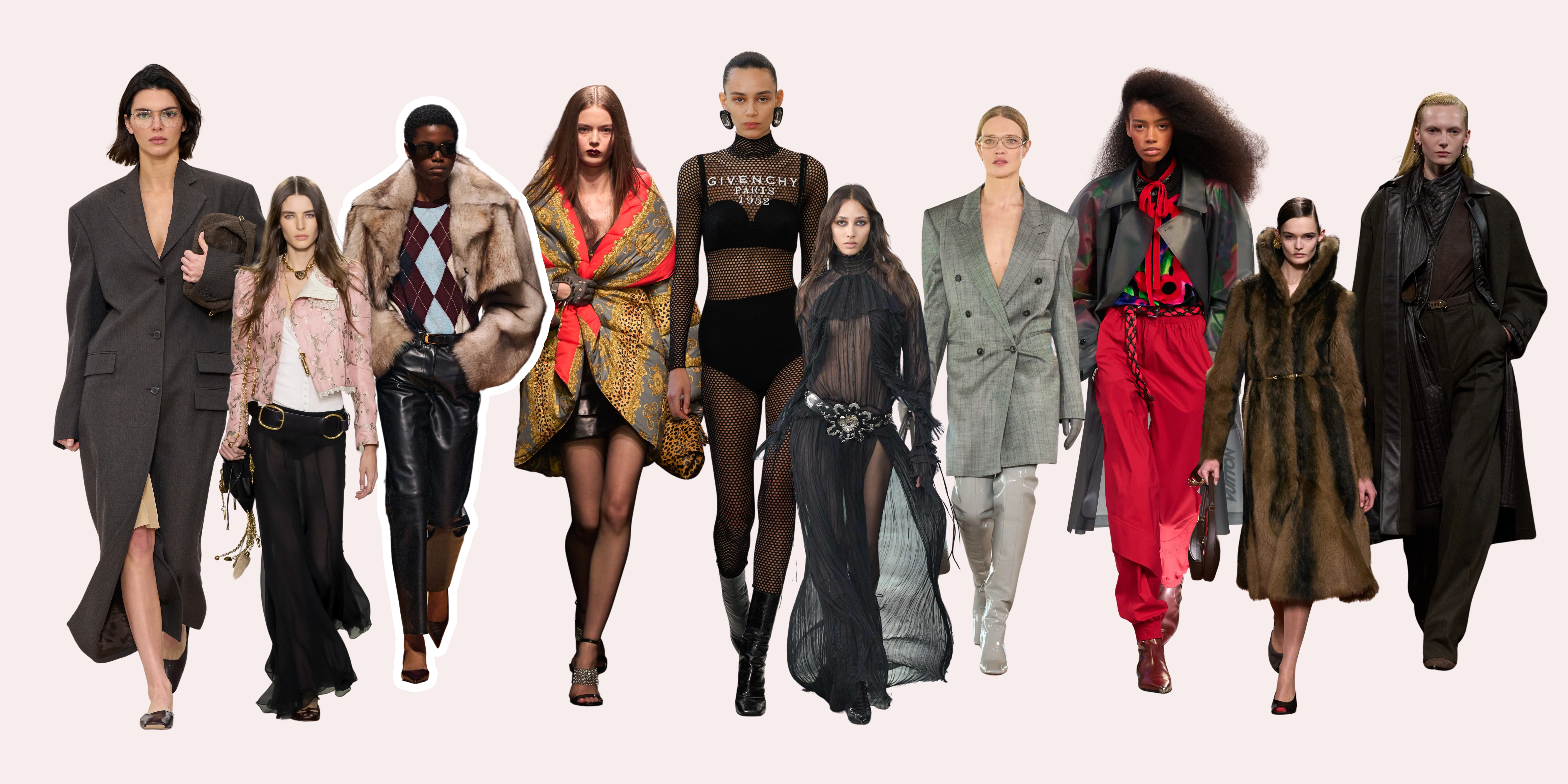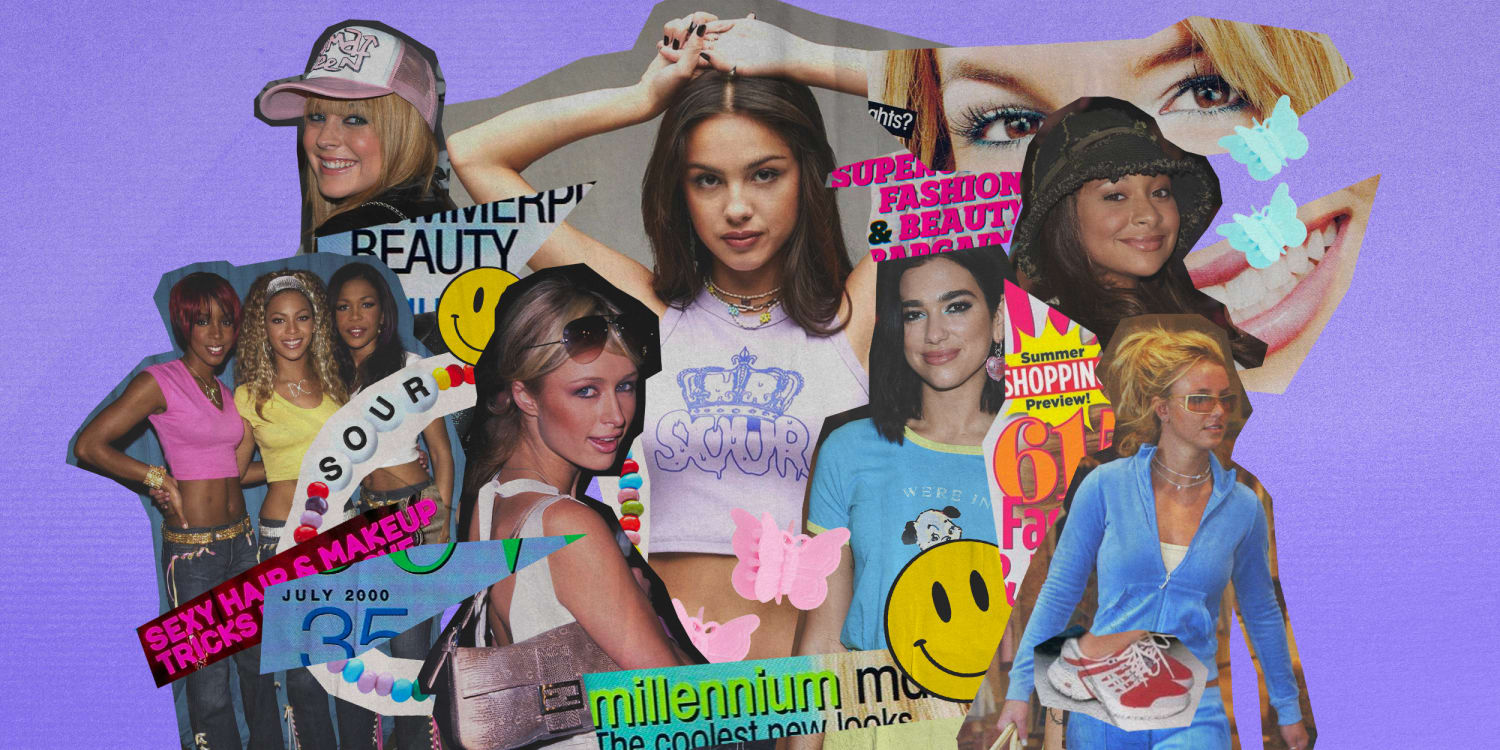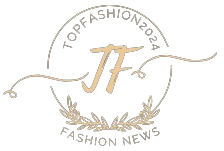

Table of Contents
Introduction
Fashion – Fashion is a dynamic tapestry that weaves together tradition, innovation, and cultural shifts. As we step into 2025, the fashion update landscape is undergoing transformative changes that not only reflect aesthetic preferences but also resonate with societal values and technological advancements. This comprehensive exploration delves into the latest trends, the resurgence of past styles, the infusion of technology into fashion, and the industry’s strides toward sustainability.
The Resurgence of Millennial Trends

Fashion is a constantly evolving landscape, yet history has proven that trends often make a comeback. In 2025, we are witnessing a significant revival of Millennial trends—styles, aesthetics, and cultural elements that defined the late 2000s and early 2010s. This resurgence is more than just nostalgia; it is a reimagination of past favorites adapted to fit the modern world. From fashion and beauty to technology and lifestyle, Millennial influences are shaping today’s culture in unexpected ways.
Why Are Millennial Trends Making a Comeback?
Several factors contribute to the return of Millennial trends. First, Gen Z and younger Millennials, who grew up during the rise of these styles, are now reaching an age where they have disposable income and influence over consumer culture. Additionally, social media platforms like TikTok and Instagram have played a major role in bringing past trends back to life, with viral challenges and nostalgia-driven content fueling their popularity.
Fashion: The Return of Early 2010s Aesthetics
The early 2010s were characterized by a mix of edgy, minimalist, and playful styles. Several key fashion trends from this era are making their way back into mainstream culture:
Skinny Jeans & Jeggings: Once thought to be replaced by baggy and wide-leg styles, skinny jeans and jeggings are regaining popularity due to their versatility and ability to pair with oversized tops.
Peplum Tops: The flattering and structured look of peplum tops is making a strong comeback, offering a polished yet playful silhouette.
Statement Accessories: Chunky necklaces, oversized sunglasses, and neon-colored accessories are re-emerging as bold fashion choices.
Beauty & Skincare: 2010s Makeup Trends Reimagined
The beauty industry is also experiencing a revival of Millennial trends, blending them with modern innovations:
Matte Liquid Lipsticks: The Kylie Jenner lip craze of the 2010s is returning, but with improved, hydrating formulas.
Dewy Skin & Strobing: Highlighters and glow-enhancing products are still in high demand, bringing back the strobing trend.
Minimalist Beauty Routines: Influenced by the “no-makeup” makeup trend, beauty brands are releasing multipurpose products that simplify routines.
Technology & Social Media: The Influence of Digital Nostalgia
Millennials were the first generation to fully embrace social media, and their nostalgia is bringing back digital trends:
Throwback Filters & Photo Editing Styles: Vintage-inspired Instagram filters and Tumblr-era aesthetics are popular again.
Blogging & Long-Form Content: While short-form videos dominate, there is a renewed interest in personal blogs and long-form storytelling.
DIY Culture: Platforms like Pinterest and YouTube are seeing a resurgence of DIY tutorials, from fashion hacks to home decor.
The Impact of Millennial Trends on Modern Society
The resurgence of Millennial trends reflects a larger cultural shift toward nostalgia, sustainability, and individuality. As people look back on past trends with fondness, they are also adapting them to suit contemporary lifestyles, blending old aesthetics with new innovations. This movement showcases the cyclical nature of trends and highlights how past influences continue to shape the future.
The revival of Millennial trends is not just a fleeting moment but a testament to the lasting impact of early 2010s culture. Whether in fashion, beauty, or digital spaces, these trends are being reinterpreted for a new era, proving that style and culture are always evolving while staying rooted in the past.
Emerging Designers Shaping the Future
The fashion industry is undergoing a major transformation, driven by a new wave of emerging designers who are redefining creativity, sustainability, and innovation. These fresh talents are challenging traditional norms and bringing unique perspectives to the forefront, shaping the future of fashion. With their emphasis on ethical practices, technological advancements, and cultural inclusivity, these designers are not only influencing trends but also reshaping how we perceive and consume fashion.
The Rise of Emerging Designers
The modern fashion landscape is no longer dominated solely by legacy brands. Thanks to digital platforms and increased access to resources, independent designers now have the opportunity to showcase their work on a global scale. Social media, online marketplaces, and fashion incubators have provided a launchpad for new talent, allowing them to reach wider audiences without relying on traditional fashion gatekeepers.
Sustainability and Ethical Fashion
One of the most significant contributions of emerging designers is their commitment to sustainability and ethical production. As the fashion industry faces increasing scrutiny for its environmental impact, these designers are leading the charge in developing innovative solutions:
Upcycling & Zero Waste Design: Designers are repurposing discarded materials to create new collections, reducing waste and promoting circular fashion.
Eco-Friendly Materials: The use of organic fabrics, biodegradable textiles, and lab-grown materials is becoming more prevalent among emerging designers.
Fair Trade and Ethical Labor Practices: Small-scale designers are prioritizing fair wages and humane working conditions, ensuring that fashion remains ethical from production to consumption.
Technology and Fashion Innovation
The integration of technology into fashion is another defining feature of the new generation of designers. They are leveraging cutting-edge advancements to enhance both design and production processes:
3D Printing in Fashion: This technology allows for sustainable production, reducing fabric waste and enabling intricate designs that were previously impossible to create.
AI-Generated Designs: Some designers are experimenting with artificial intelligence to generate patterns, predict trends, and create more personalized fashion experiences.
Smart Textiles & Wearable Tech: Innovations such as temperature-regulating fabrics and garments embedded with sensors are paving the way for functional and adaptive clothing.
Cultural Representation and Inclusivity
Emerging designers are playing a crucial role in promoting cultural diversity and inclusivity in fashion. Unlike traditional brands that often cater to a narrow demographic, these designers celebrate heritage, identity, and representation:
Diverse Sizing & Gender-Neutral Fashion: Many independent brands are moving away from rigid sizing charts and gendered clothing, creating inclusive designs for all body types and identities.
Cultural Storytelling Through Fashion: Designers are incorporating traditional craftsmanship, indigenous techniques, and historical references to honor and share their cultural roots.
Representation on the Runway: Fashion weeks and showcases now feature a broader range of models, reflecting the diversity of modern society.
The Impact on Consumer Behavior
The rise of these new designers is also reshaping consumer behavior. Today’s fashion consumers are more conscious and selective, opting for brands that align with their values. Factors such as sustainability, transparency, and authenticity influence purchasing decisions, leading to a shift from fast fashion to more meaningful, long-lasting investments.
Notable Emerging Designers to Watch
Several rising designers are making waves in the industry with their unique approaches and visionary collections:
Marine Serre (France): Known for her eco-futuristic designs that incorporate recycled materials and bold aesthetics.
Thebe Magugu (South Africa): A designer who blends contemporary fashion with African heritage, celebrating storytelling through clothing.
Pyer Moss (USA): A brand that challenges societal norms and highlights Black culture through thought-provoking designs.
Priya Ahluwalia (UK): A pioneer in sustainable fashion who merges vintage textiles with modern tailoring.
Hanifa (USA): Gaining recognition for digital runway shows and innovative, body-inclusive silhouettes.
The future of fashion is being shaped by a new generation of designers who are pushing boundaries, embracing sustainability, and championing diversity. As they continue to innovate and challenge the status quo, these emerging designers are not only influencing trends but also creating a more ethical, inclusive, and technologically advanced fashion industry. Their impact will be felt for years to come, making fashion a more dynamic and conscious space for all.
The Influence of Technology on Fashion

Fashion has always been a reflection of society, culture, and technological advancements. In today’s digital age, technology has become one of the biggest driving forces shaping the fashion industry. From design and production to marketing and consumer experience, innovation is transforming every aspect of fashion. This article explores how technology is influencing fashion, the latest advancements, and the future of this ever-evolving industry.
The Evolution of Fashion Through Technology
Fashion and technology have always gone hand in hand. Historically, innovations such as the sewing machine in the 19th century revolutionized clothing production, making garments more accessible. In the 21st century, digital tools, artificial intelligence, and smart textiles are redefining fashion like never before.
Digital Design and 3D Printing
One of the most remarkable technological breakthroughs in fashion is digital design and 3D printing. Designers now use software like CLO 3D and Marvelous Designer to create digital prototypes before manufacturing physical garments. This reduces waste and speeds up the design process.
3D printing has also enabled designers to craft intricate and avant-garde fashion pieces that were previously impossible. Brands like Iris van Herpen have pioneered 3D-printed couture, merging technology with art to create futuristic designs. This innovation also promotes sustainability, as it allows for precise material usage and reduces excess waste.
AI in Fashion: Smart Recommendations and Design Innovation
Artificial Intelligence (AI) is revolutionizing the fashion industry by enabling personalized shopping experiences and predictive analytics. AI-powered tools help:
Predict fashion trends by analyzing social media, customer behavior, and global search patterns.
Improve customer service through chatbots and virtual assistants.
Enhance design creativity, as AI can generate new patterns and styles based on consumer preferences.
Retail giants like Zara and H&M use AI-driven insights to manage inventory, ensuring they produce the right amount of clothing to meet demand without excessive waste.
Smart Fabrics and Wearable Technology
Smart fabrics and wearable technology are transforming the way we interact with clothing. These textiles incorporate innovative features such as:
Self-heating jackets for extreme weather conditions.
Moisture-wicking and temperature-regulating fabrics for sportswear.
LED-embedded dresses that change color based on mood or environment.
Companies like Google (Project Jacquard) and Nike have invested in smart fabrics, introducing interactive clothing that responds to touch and movement.
Augmented Reality (AR) and Virtual Try-On Technology
Augmented Reality (AR) has revolutionized the way consumers shop for fashion. Brands now offer virtual fitting rooms, allowing shoppers to try on clothes and accessories using AR apps before making a purchase.
Gucci, Burberry, and Sephora have integrated AR into their mobile apps, enabling users to see how products look on them in real time.
AR-powered mirrors in retail stores enhance in-person shopping by providing outfit recommendations and styling tips.
Virtual fashion shows and digital collections allow brands to showcase their designs in immersive ways.
Blockchain for Transparency and Ethical Fashion
The demand for sustainability and ethical sourcing has led to the adoption of blockchain technology in fashion. Blockchain ensures transparency by allowing consumers to trace a garment’s journey from raw material to finished product.
Luxury brands like Louis Vuitton and Prada use blockchain to verify the authenticity of high-end products, preventing counterfeits.
Blockchain helps consumers make informed choices about ethical and sustainable brands.
Digital fashion ownership (NFTs) enables unique, limited-edition digital clothing purchases for virtual worlds and metaverse fashion.
The Rise of Metaverse Fashion and Digital Clothing
With the rise of the metaverse, fashion is expanding beyond the physical world. Digital fashion is becoming a lucrative market, allowing users to buy and wear virtual clothing in online spaces like Decentraland and Roblox.
Balenciaga and Dolce & Gabbana have launched NFT collections, blending high fashion with blockchain technology.
Virtual influencers and AI-generated models are redefining fashion marketing.
Digital fashion reduces waste by eliminating the need for physical materials while still driving engagement.
The Future of Fashion Technology
As technology continues to evolve, the fashion industry will witness even greater transformations. Future advancements may include:
AI-powered sustainable production methods to minimize waste.
Personalized clothing manufacturing based on body scans and 3D modeling.
Enhanced virtual reality (VR) experiences, allowing consumers to shop in fully immersive digital stores.
More intelligent, responsive fabrics that adapt to environmental changes.
Technology is revolutionizing fashion in ways we never imagined. From AI-driven designs and smart textiles to AR-powered shopping and blockchain transparency, the fusion of fashion and technology is creating a more sustainable, efficient, and interactive industry. As we move forward, embracing these innovations will be crucial for designers, brands, and consumers alike.
The intersection of technology and fashion is not just a trend—it is the future of how we experience and engage with style. Whether through virtual fashion shows, intelligent fabrics, or AI-generated outfits, one thing is clear: the world of fashion will never be the same again.
Sustainability and Ethical Fashion
Fashion is one of the most dynamic industries, constantly evolving with cultural and technological shifts. However, it is also one of the largest contributors to environmental pollution and unethical labor practices. With growing awareness of these issues, sustainability and ethical fashion have emerged as key movements reshaping the industry. Consumers, designers, and brands are now prioritizing eco-friendly materials, fair labor practices, and innovative technologies to create a more sustainable and ethical fashion future.
This article explores the impact of sustainability and ethical fashion, the latest innovations, and how they are influencing both businesses and consumers worldwide.
The Environmental and Ethical Challenges in Fashion
The Impact of Fast Fashion
Fast fashion brands produce trendy, inexpensive clothing at a rapid pace, leading to severe environmental and ethical consequences. Key concerns include:
Massive textile waste: An estimated 92 million tons of textile waste is generated annually.
High water consumption: The production of a single cotton T-shirt requires 2,700 liters of water.
Carbon emissions: The fashion industry contributes 10% of global carbon emissions.
Exploitative labor conditions: Many garment workers in developing countries face poor working conditions and low wages.
These challenges have driven the push for sustainable and ethical fashion, urging brands to rethink their production models.
Key Innovations in Sustainable Fashion
1. Eco-Friendly Materials and Fabric Innovations
Sustainable fashion starts with choosing the right materials. Brands are now adopting:
Organic cotton: Grown without pesticides and harmful chemicals.
Hemp and bamboo fabrics: Require less water and grow quickly without fertilizers.
Recycled textiles: Companies like Patagonia use recycled polyester from plastic bottles to create eco-friendly garments.
Bio-fabricated materials: Innovations like Mushroom Leather (Mylo) and Lab-Grown Cotton are revolutionizing sustainable fashion.
2. Circular Fashion: Reducing Waste
The circular fashion economy aims to minimize waste and extend the lifecycle of clothing through:
Clothing rental and resale platforms like ThredUp, The RealReal, and Rent the Runway.
Upcycling and repurposing old fabrics into new designs.
Repair and customization services offered by brands to encourage longer use.
3. Ethical Supply Chains and Fair Trade
Ensuring fair labor conditions is a crucial part of ethical fashion. Brands committed to ethical sourcing:
Certify their supply chains with organizations like Fair Trade, GOTS, and B Corporation.
Use transparent production processes, allowing consumers to track garment origins.
Support artisanal and traditional craftsmanship, preserving cultural heritage while providing fair wages.
4. Technology-Driven Sustainability
Tech innovations are reshaping fashion sustainability:
AI and Data Analytics help brands optimize inventory and reduce overproduction.
Blockchain Technology provides supply chain transparency, ensuring ethical sourcing.
3D Printing allows for waste-free production and on-demand manufacturing.
Smart Textiles like biodegradable fabrics help reduce environmental impact.
How Brands Are Leading the Sustainability Movement
1. Luxury Brands Taking a Green Approach
Gucci’s Off the Grid collection features recycled and organic materials.
Stella McCartney, a pioneer in sustainable fashion, refuses to use leather or fur.
Burberry has pledged to become carbon neutral by 2040.
2. Fast Fashion’s Shift to Sustainability
Even fast fashion brands are adapting:
H&M’s Conscious Collection promotes organic and recycled materials.
Zara’s Join Life initiative aims for 100% sustainable fabrics by 2025.
Nike’s Move to Zero campaign focuses on reducing carbon and waste footprints.
3. Small Brands Making a Big Impact
Reformation uses a transparent supply chain and eco-friendly fabrics.
Pangaia incorporates bio-based dyes and plant fibers.
Veja creates sneakers from sustainable rubber and organic cotton.
The Role of Consumers in Ethical Fashion
Sustainable fashion is not just about brands; consumers play a vital role. Steps individuals can take include:
Buying less but better: Choosing quality over quantity.
Supporting sustainable brands: Prioritizing companies that align with ethical values.
Recycling and donating clothing: Reducing waste by giving clothes a second life.
Advocating for policy changes: Encouraging governments to enforce stricter regulations on fashion waste and labor rights.
The Future of Sustainability in Fashion
As awareness grows, the future of fashion looks greener and more ethical. Innovations on the horizon include:
Zero-waste fashion design, eliminating excess material.
AI-driven circular economy models, ensuring clothing is reused or repurposed.
Advancements in biodegradable fabrics, reducing landfill waste.
Stronger global sustainability policies, holding brands accountable.
Sustainability and ethical fashion are no longer just trends—they are necessities for the future of the industry. As brands adopt eco-friendly materials, transparent supply chains, and technology-driven solutions, consumers also have a responsibility to support ethical choices. Together, these efforts will lead to a more responsible and innovative fashion industry.
By embracing sustainability, fashion can continue to inspire while also protecting our planet and improving the lives of those who create it.
Conclusion
Fashion in 2025 is a blend of nostalgia, innovation, and conscious consumerism. The resurgence of millennial trends, the rise of digital fashion, technological advancements, and sustainable initiatives showcase how the industry is evolving to meet modern demands. As fashion continues to reflect societal changes, it remains an ever-evolving expression of personal and collective identity.
